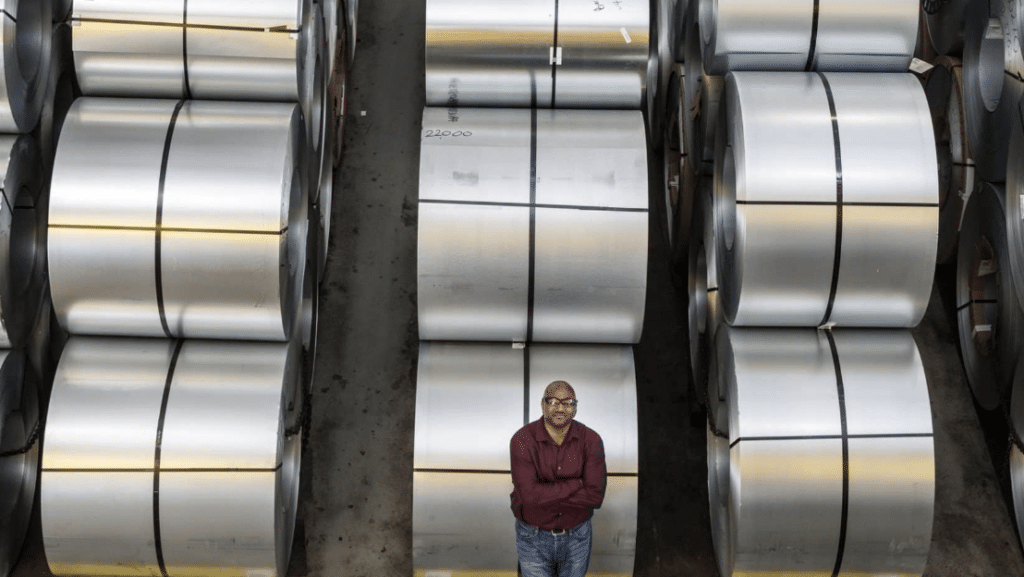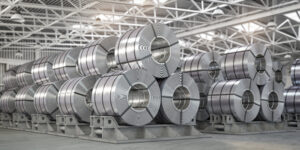In the dynamic landscape of the steel industry, staying informed about steel prices is crucial for businesses like Pacesetter which are deeply involved in both the supply and processing of flat-rolled steel. The steel market price, often referred to as steel prices, is a multifaceted metric that reflects the intricate interplay of several key factors. In this context, we explore the dynamics that influence steel pricing and delve into the role of the steel pricing index.
What Is the Price of Steel?
The price of steel, often a subject of significant interest and scrutiny, is driven by various factors, and its fluctuations have profound implications for industries and economies alike. Companies like Pacesetter must vigilantly monitor and analyze these factors to adapt and thrive in the ever-evolving steel market.
Steel Prices: A Balancing Act of Supply and Demand
One of the most critical factors impacting steel prices is the timeless law of supply and demand. When demand for steel surpasses the available supply, steel prices tend to rise. Conversely, an oversupply of steel relative to demand can lead to lower steel prices. Forecasting steel prices relies not only on current conditions but also on an accurate assessment of anticipated supply and demand fluctuations. Access to robust data and analysis is essential for businesses aiming to navigate the nuances of this balancing act. It is imperative to remember that inventory levels across the steel supply chain can play a pivotal role in decoupling and dampening the immediate effects of supply and demand imbalances.
Steel Prices and Industry Trends
The demand for steel is closely intertwined with the fortunes of industries that depend on it. For instance, a thriving auto industry can drive up the demand for steel, as can a booming construction sector. As such, monitoring industry trends, total economic growth, and policy developments becomes paramount.
The Role of the Steel Pricing Index
In the quest to understand and predict steel prices, the steel pricing index plays a vital role. This index provides a comprehensive snapshot of steel market pricing trends, serving as a reliable reference point for businesses and investors. By tracking the steel pricing index, stakeholders gain access to a valuable tool for assessing market conditions and making informed decisions.
Cost of Materials and Steel Prices
The cost of materials used in steel production, such as scrap metal and iron ore, significantly influences steel prices. When these resources become scarce, demand surges, leading to higher material costs. This, in turn, can impact the overall price of steel. Businesses like Pacesetter with a focus on specific steel products, like zinc-coated items, also closely monitor the fluctuating costs of these materials. Additionally, energy costs represent a vital indicator, reflecting both market dynamics and mill cost structures due to the substantial energy requirements of steel production.
Shipping Costs and Timing
Transporting raw materials for steel production and finished steel products entails expenses that can affect pricing. Shipping costs are influenced by factors like politics, labor costs, fuel prices, and choice of shipping mode. In a volatile steel market, selecting a shipping method with a longer transit time can mitigate risks.
Time of Year and Steel Pricing
Seasonal variations exert their influence on industries reliant on steel. Holidays, weather conditions, and seasonal fluctuations can impact the production of new products, leading to shifts in demand. These seasonal factors also affect shipping patterns and transit modes, contributing to pricing fluctuations.
In conclusion, understanding what influences the price of steel is vital for businesses operating in the steel industry. By closely monitoring steel prices, industry trends, the steel pricing index, the cost of materials, shipping costs, and the timing of market fluctuations, companies can make informed decisions and navigate the intricate dynamics of the steel market effectively.




